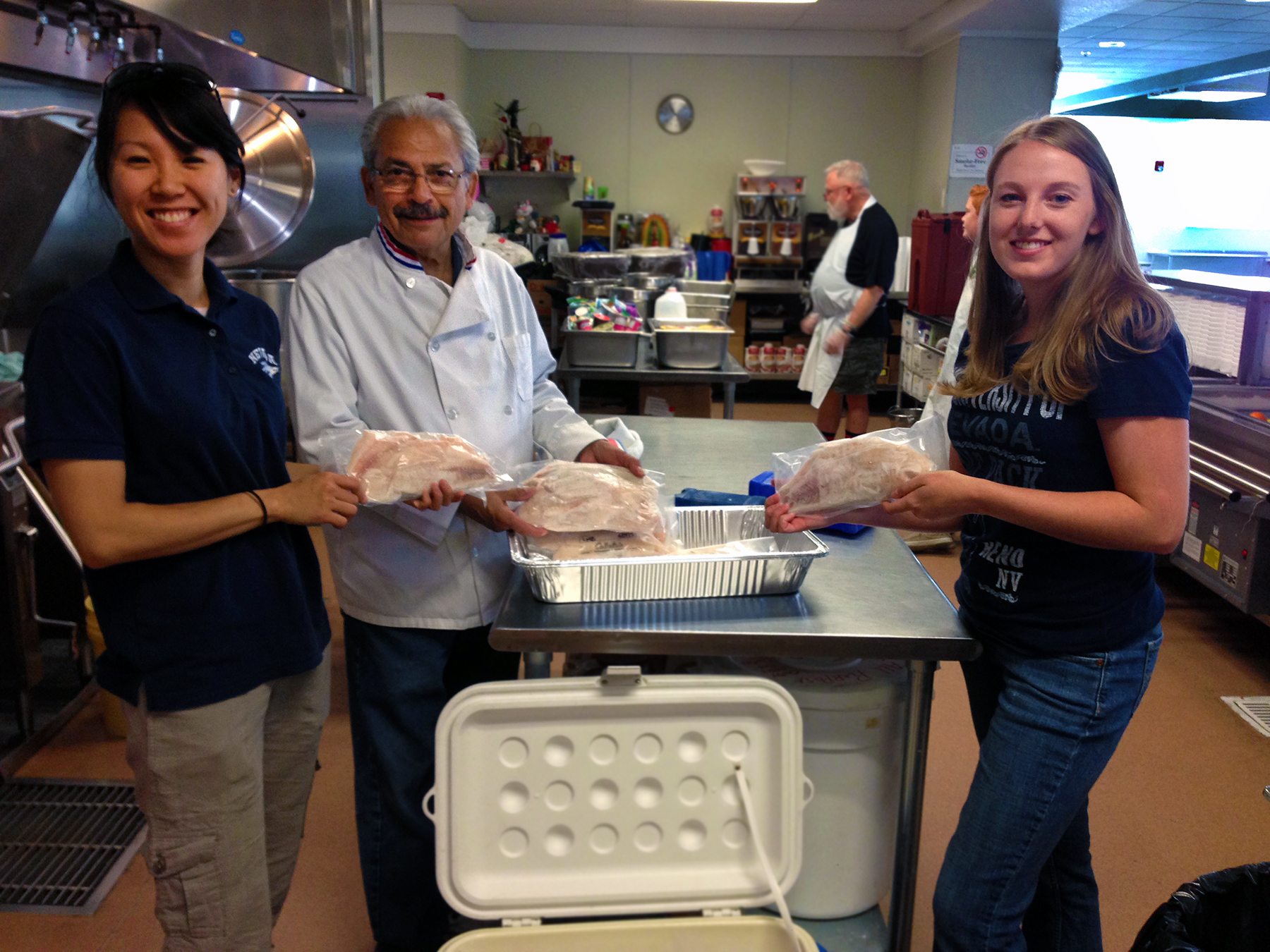
University of Nevada, Reno (UNR) researchers have been harvesting invasive fish from Lake Tahoe for the past three years — 51,000 pounds of largemouth bass and bluegill.
Rather than discard them, the fish are now serving a community need by way of feeding the hungry, both the poor and homeless through Catholic Charities, and animals at Animal Ark.
“We have transferred about 55 pounds of fish fillets to St. Vincent’s (Food Pantry) since the start of the 2015 season, and about 200 pounds in one year during the pilot program,” said Christine Ngai, project lead and researcher from UNR’s Aquatic Ecosystems Analysis Laboratory.
St. Vincent’s couldn’t be happier.
“We’re absolutely thrilled to get the fish,” Auburn Harrison, director of marketing and public relations at Catholic Charities of Northern Nevada which operates St. Vincent’s Food Pantry, said. “Every little bit of food helps, and it’s nice to know the fish are going into the bellies of people who are hungry – the poor and the homeless.
“It’s a great change to offer healthier, fresh food. We partner with others in the community for fresh food, and this is important to us. We’re thankful Christine and her crew thought of us for their fish from Lake Tahoe.”
Smaller fish, not suitable for fillets, are processed and giving to Animal Ark Wildlife Shelter. Remaining fish by-product is sent for composting to Full Circle Soils & Compost in Gardnerville.
The invasive fish, native to warmer waters, are a threat to native fish habitat, and, according to UNR, “nonnative fish has virtually eliminated the native minnow population.”
“In Lake Tahoe, since 1960, there has been a tenfold decline in native fishes, but what we also know is that these recent invaders could further depress the native population through competition and predation,” said Sudeep Chandra, a freshwater scientist in the University’s biology department and director of the University’s Aquatic Ecosystems Analysis Laboratory in the College of Science. “We’ve found, and studies by scientists at other lakes have confirmed, that we must target the large spawning adult fish, and need continuous efforts, on a yearly basis, to be effective.”

